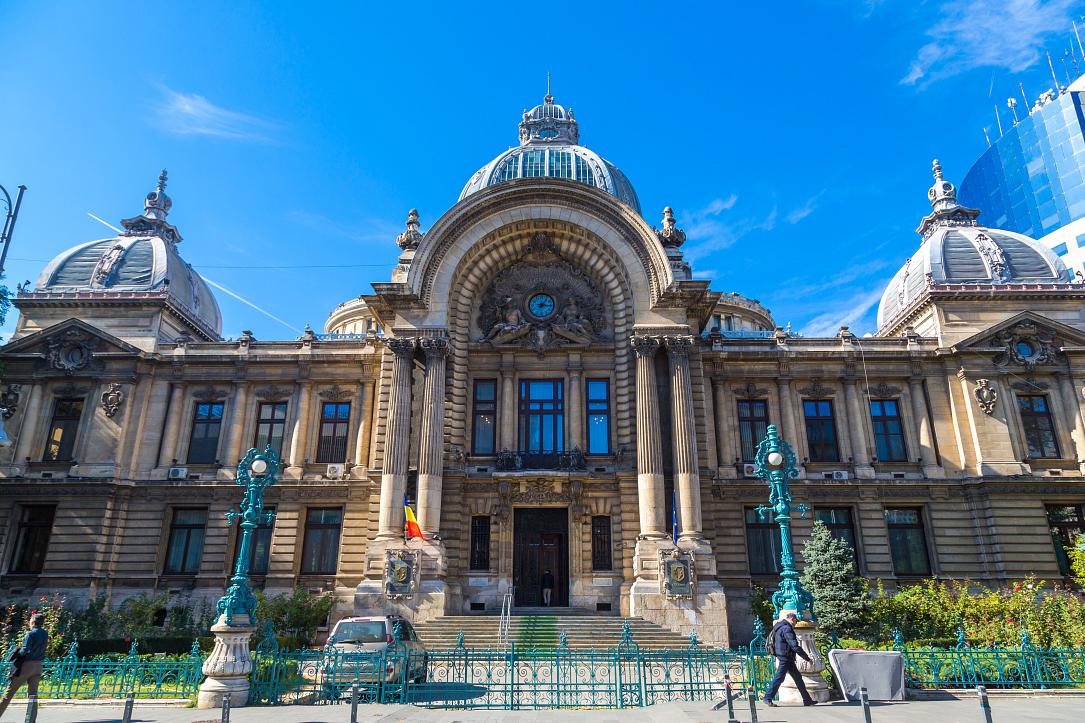This is native content supported by Hotel Cismigiu
Bucharest Old Town Highlights: The iconic CEC Palace that is over a century old

This is native content supported by Hotel Cismigiu

This is native content supported by Hotel Cismigiu

One of the most iconic buildings in downtown Bucharest, one that can be easily reached from the Old Town and from the central Universitate area is the Palace of the Savings Bank.
Best known as the CEC Palace (C.E.C is short for Casa de Economii si Consemnatiuni in Romanian), this remarkable building is impossible to miss when strolling down Victoriei Avenue. Not only is it impressive to the eye for its architecture, but it also comes with a rich history.
The C.E.C. Palace was built and inaugurated at the turn of the century, in 1900. It reflects the openness of the period towards Europe, as it was erected in the eclectic style of the French academicism. Other buildings nearby, such as the Palace Hotel building (nowadays the Hotel Cismigiu, which was renovated and re-opened in 2012) was also built under the eclecticism style, with neoclassical and Art Nouveau elements specific to the Year 1900 movement spreading throughout Europe at the beginning of the 20th century.
The C.E.C. Palace is also one of the capital’s most solid buildings as its structure was not damaged by the earthquakes, nor by the war bombardments in the 40s.
It took three years for this building to be finalized, after its foundation was laid, in the presence of King Carol I and of Queen Elisabeth of Romania. The project of the C.E.C. Palace was entrusted to French architect Paul Gottereau, while Romanian architect Ion Socolescu was in charge of executing the works.
Almost three decades before the Palace was built, on the landplot there were a monastery and an inn, dating back from the 16th century. But since they had degraded quite a lot, they were demolished and made room for the new bank building.
The bank itself had started its activity in 1865, as Deposits and Savings House, under the management of Enric Winterhalder, a German who settled in Romania. As its activity expanded, it needed new headquarters.
Between 1877 and 1878, the institution helped finance Romania’s Independence War, with the aid of the “mortgage tickets” which made up a significant amount of the resources needed to fund the participation in the conflict. It granted loans for building various projects of the public administration, such as schools, hospitals or churches.
Among the building’s easily recognizable architectural elements are the cupolas – the central one, made out of glass and metal, and the four ones covering the volumes in the corners of the edifice. Besides the aesthetic value, they adapt the construction to its purpose by helping with the special acoustics of the hall where the counters were placed. The sound propagates vertically and not horizontally there, so as the conversations that happened there could not be heard by other people. The bank counters were opened for 99 years, until 1999. The central hall could host up to 400 people at once.
Massive stone from Dobrogea was used in the construction of the façade, while marble from the same region was used for the central hallway and the upper stairs. The pediment of the main entrance has two sculptures, representing the God of commerce, Mercury, and the Goddess of agriculture and prosperity, Demeter.
The Festive Hall also hosted until 1948 the portraits of King Carol I and of Queen Elisabeth, and the portraits of King Ferdinand I and of Queen Marie, under whose rule the Great Union of 1918 took place, painted by Costin Petrescu. After 1948, during the time of the communist regime, the portraits were destroyed after being covered with paint. They were recently recreated by a Romanian artist.
The CEC Palace is not open to the public regularly, those CEC Bank, which owns the building, sometimes organizes open days. You can find pictures from inside the building in this app (only iOS).
We also recommend including the Victoriei Avenue and the CEC Palace in our Bucharest trip, or at least seeing and photographing this impressive building from the Old Town. You can take great pictures of it from the Stavropoleus street.
This is native content supported by Hotel Cismigiu.